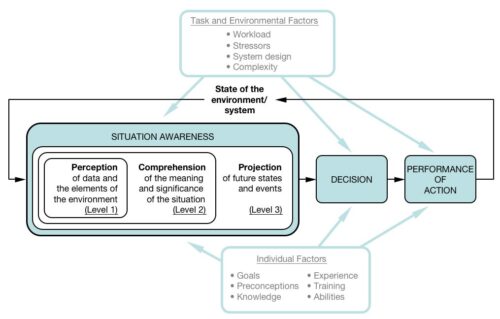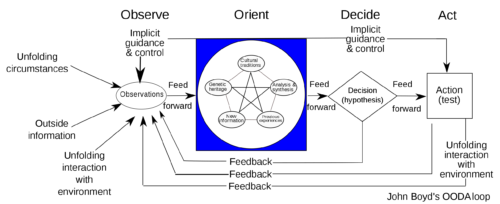Pexels photo by Engin Aakyurt.
In the complex world we live in, we cannot take personal safety for granted. The ability to identify and react to threat indicators is a vital skill in ensuring one’s security. It is essential to for us to have an understanding of how to recognize these often-subtle signs of danger, often referred to as “pre-threat indicators’’. By recognizing these indicators early, we can take appropriate action to avoid or mitigate the threat.
Situational Awareness
Situational awareness (SA) is a critical aspect of decision-making. It involves being cognizant of one’s surroundings, understanding the context and implications of those surroundings, and predicting future scenarios based on current information. In essence, situational awareness is the ability to perceive environmental elements, comprehend their meaning, and project their status in the near future. By enhancing our SA we can make more informed decisions, respond more effectively to unexpected events, Cultivating SA is of paramount importance.
Endsley’s Model of Situational Awareness
Dr. Mica Endsley’s model of SA is a widely recognized and accepted framework. It has been substantially supported by research findings and is the most frequently cited model in the field of Human Factors.
Endsley’s model outlines the cognitive processes and mechanisms that individuals use to evaluate situations and develop SA. It also considers the task and environmental factors that influence their ability to achieve SA. The model details three levels of SA formation: perception, comprehension, and projection.
1. Perception (Level 1 SA): This is the initial step in achieving SA. It involves recognizing the status, attributes, and dynamics of relevant elements in the environment. Level 1 SA encompasses processes such as monitoring, cue detection, and simple recognition, leading to an awareness of various situational elements (objects, events, people, systems, environmental factors) and their current states (locations, conditions, modes, actions).
2. Comprehension (Level 2 SA): This step involves synthesizing the disparate elements of Level 1 SA through pattern recognition, interpretation, and evaluation. Level 2 SA requires integrating this information to understand its impact on the individual’s goals and objectives. This includes developing a comprehensive picture of the world, or the portion of the world that concerns the individual.
3. Projection (Level 3 SA): This is the highest level of SA and involves the ability to predict the future actions of the elements in the environment. Level 3 SA is achieved by understanding the status and dynamics of the elements and the situation (Levels 1 and 2 SA), and then extrapolating this information to determine how it will affect future states of the operational environment.
Endsley’s model illustrates how SA forms the primary basis for decision making and performance in the operation of complex, dynamic systems. While SA alone cannot guarantee successful decision making, it does support the necessary input processes (e.g., cue recognition, situation assessment, prediction) upon which good decisions are based.

OODA Loop
Most readers have heard of the OODA Loop. The OODA Loop, which stands for Observe, Orient, Decide, and Act, is a decision-making process commonly used in military and business strategy. The concept was developed by military strategist and United States Air Force Colonel John Boyd.
The Observe phase involves gathering information from the environment. In the Orient phase, this information is processed and interpreted in the context of existing knowledge and experiences. The Decide phase involves choosing a course of action based on the observations and orientation. Finally, in the Act phase, the chosen action is implemented.
The loop suggests that decision-making is a continuous and iterative process, and the ability to cycle through the OODA Loop faster than an opponent can provide a significant advantage. It’s a powerful tool that can be applied to many aspects of life, including identifying and responding to pre-threat indicators.

Identifying Pre-Threat Indicators
Identifying pre-threat indicators is a crucial aspect of maintaining security and preventing potential harm. These indicators are observable anomalies or activities that may signal a potential threat. They can be broadly categorized into two types: behavioral and environmental.
Behavioral Indicators
Behavioral indicators involve changes in an individual’s actions, words, or lifestyle that may suggest a shift towards a harmful intent. The latter could include sudden withdrawal from social activities, increased interest in extremist ideologies, or unexplained changes in behavior or appearance. These indicators can be both verbal and non-verbal, and recognizing them early can provide valuable time to react and de-escalate the situation.
Behavioral indicators can include aggressive or threatening demeanor, argumentative behavior, contempt, distrust, hostility, non-compliance, non-congruence with communication, or in a way that is out of context for the situation. Body language cues such as a fixed stare, defensive posture, clenched fists, heavy breathing and exaggerated movements can also serve as indicators. This could include acting nervously, aggressively, or in a way that is out of context for the situation. Other signs include behavior in vehicles, micro-expressions, grooming, and stretching.
It’s important to remember that these are not necessarily guarantees of an attack or singularly cause for immediate, intense defensive actions, but in combination with or in the context of a risky encounter, they should not be overlooked.

Environmental Indicators
Environmental indicators, on the other hand, relate to the broader context in which an individual operates. Environmental pre-threat indicators are crucial in predicting potential threats and maintaining safety. These indicators are typically anomalies or changes in the environment that may suggest a potential threat. These could include a recent increase in local crime rates, the presence of extremist groups in the community, or significant sociopolitical changes in the area. In a physical security context, environmental indicators could include unattended packages, suspicious vehicles, or unusual activity near a secure area.
Recognizing these indicators requires a thorough understanding of the normal state of the environment (a baseline), as well as the ability to detect deviations from this norm. It also requires continuous monitoring and vigilance, as threats can emerge rapidly and without warning.
It’s also important to note that these environmental indicators also do not necessarily mean that a threat is imminent. They are simply signs that further investigation may be warranted. The goal is to identify potential threats early enough to prevent harm.

Responding to Pre-Threat Indicators
Once you’ve identified a potential threat, the next step is to respond in a way that maximizes your safety.
Step 1: Trust Your Instincts
Your instincts are your first line of defense when it comes to personal safety. They are a primal response to potential danger. If something doesn’t feel right, trust your gut feeling. It’s better to err on the side of caution than to ignore a potential threat. Remember, it’s better to be safe than sorry.
Step 2: Maintain Distance
If you identify a potential threat, the first step is to put as much distance between yourself and the threat as possible. This gives you time to assess the situation and decide on the best course of action. Distance not only provides a physical barrier but also gives you the mental space to think clearly.
Step 3: Alert Authorities
If you believe there is a serious threat, don’t hesitate to alert the authorities. It’s always better to let professionals handle potentially dangerous situations. Whether it’s the police, security personnel, or other relevant authorities, they have the training and resources to respond effectively.
Step 4: Seek Safety
Look for the nearest safe place where you can take shelter. This could be a public place with lots of people, a police station, or even a well-lit area. The presence of others can deter potential threats, and well-lit areas can make you more visible, which can also deter potential attackers.
Step 5: Stay Calm
In a threatening situation, it’s important to stay calm. Panic can cloud your judgment and make it harder for you to make rational decisions. Deep breathing can help manage your stress response and allow you to think clearly. Remember, training builds confidence, so consider taking courses in personal safety and threat response.
Step 6: Self-Defense
In some situations, you may need to defend yourself. If this is the case, it’s important to have some knowledge of self-defense techniques. However, physical confrontation should always be a last resort. Consider taking a self-defense class to learn basic techniques and boost your confidence in your ability to protect yourself.

Final Thoughts
Identifying and appropriately reacting to pre-threat indicators is a skill that can be developed with practice and awareness. Always remember that the key to personal safety lies in prevention, early detection, and appropriate reaction. The key to prevention and early detection lies in situational awareness and the ability to recognize potential threats before they manifest themselves. By staying alert and aware of our surroundings, we can better protect ourselves and others from potential threats. It’s always better to prevent a threat than to have to deal with one. Be proactive, not reactive.
*The views and opinions expressed on this website are solely those of the original authors and contributors. These views and opinions do not necessarily represent those of Spotter Up Magazine, the administrative staff, and/or any/all contributors to this site.
